Discover the work of famous contemporary photographers in this article, featuring 15 renowned artists and their iconic photos. These photographers have transformed moments into timeless masterpieces from intimate portraits to sweeping landscapes. Explore the creativity and vision behind their unforgettable images.
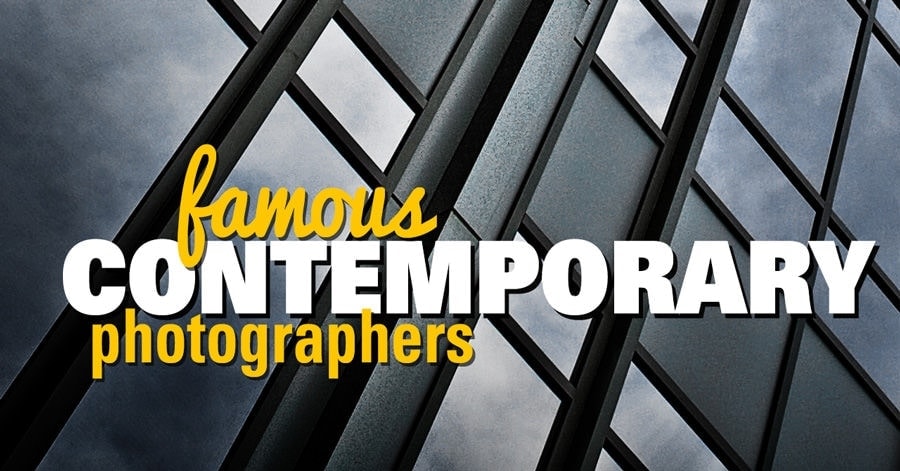
My desire is to preserve the sense of people’s lives, to endow them with the strength and beauty I see in them. I want the people in my pictures to stare back.
Nan Goldin
Over the past decades, the photographic medium has been redefined and shaped by new emerging technologies and new and innovative formats. Perhaps the most important change in relation to this was the appearance of Color Photography, which has a closer equivalent to reality itself. Nowadays, we have undergone another crucial change in creative photography with digital manipulation and digital development.
Not everyone can become a great artist; but a great artist can come from anywhere.
Anton Ego, Ratatouille
Contemporary photographers often use these developments to present new perspectives on traditional subjects and compositions.
The word contemporary refers to everything that has occurred since the 1970s.
Therefore, Contemporary Photography is not a genre but a pinpoint in the history of Photography. Almost any photographer considered important in the last fifty years or so is usually titled a “Contemporary Photographer.” But there is a little bit more to it. Contemporary Photographers are usually related to the Fine Art world, and as the School of Düsseldorf and the Helsinki School suggested, having a solid statement as an artist has been key in the work of many Contemporary Photographers.
Famous Contemporary Photographers
The following list gives you some examples that are considered important when speaking of a specific chapter in the History of Humanity, which results to be a broad one in the History of photography.
1. Andreas Gursky (1955 – )
Andreas Gursky is a celebrated contemporary German photographer renowned for his large-scale, highly detailed images of landscapes, architecture, and urban scenes. Gursky was born on January 15, 1955, in Leipzig, East Germany, and grew up in Düsseldorf, West Germany. He studied at the Kunstakademie Düsseldorf under the renowned conceptual photographers Bernd and Hilla Becher, known for their methodical, systematic approach to photography.
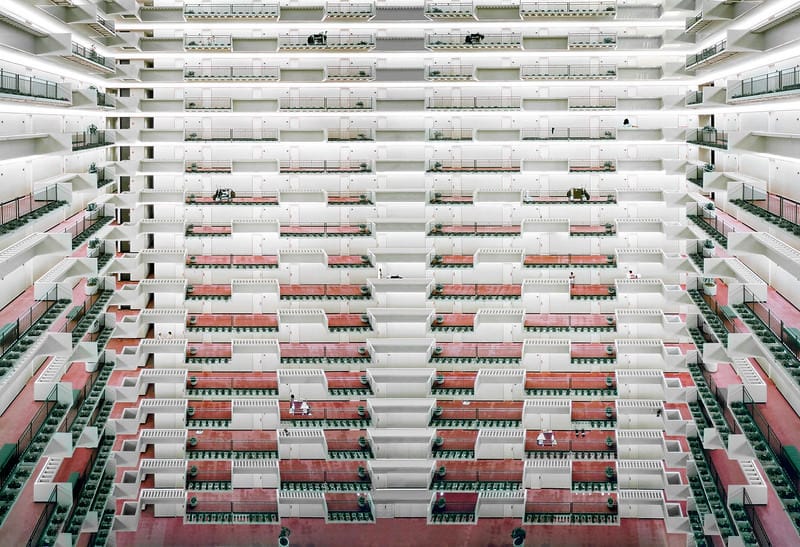
Gursky’s work is characterized by its monumental scale, meticulous composition, and extensive digital manipulation. He often shoots from elevated vantage points, creating a sense of detachment and objectivity in his images. His photographs are defined by their sweeping, panoramic views and incredible detail, capturing scenes of global commerce, industry, and human activity.
One of Gursky’s most famous images is “Rhein II,” a photograph of the Rhine River that sold for a record-breaking $4.3 million in 2011, making it the most expensive photograph ever sold at the time.
Gursky’s work has been exhibited in major museums and galleries worldwide, including the Museum of Modern Art in New York, the Tate Modern in London, and the Centre Pompidou in Paris. He continues to work as a photographer and is considered one of his generation’s most influential contemporary artists.
Beyond his record-breaking sales, Gursky captures the modern world in an intriguing form. Thanks to digital manipulation, his pictures depict familiar places that don’t exist. He cleans up these spaces to achieve his unique aesthetic or view, stating that he does this because certain elements bother him.
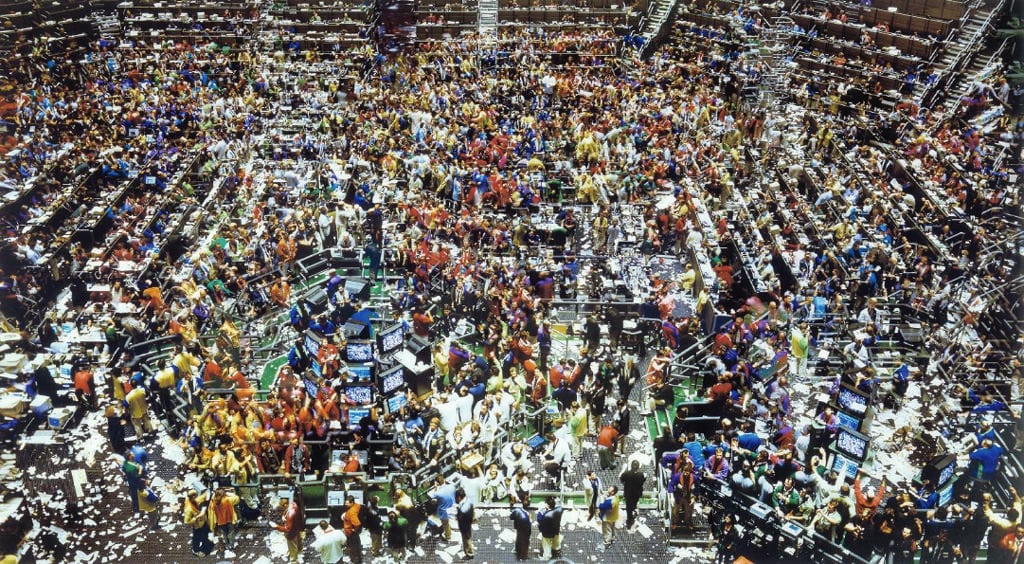
While only some of his pictures share the same enormous format and high point of view, they are part of his iconic style.
Initially, Gursky’s work may seem challenging to comprehend, but upon revisiting his work, one can develop a fascination for it. In a way, watching Gursky’s work feels like understanding Pollock’s paintings—abstract and sensitive, yet deeply relatable and comprehensible.
Beyond being known for rocketing sales and hitting some records in the world of Fine Art Photography, Gursky is a photographer that captures the modern world in an intriguing form. His pictures depict common places that don’t really exist.
How come?
Through digital manipulation, of course. He cleans common places to achieve a personal aesthetic or view of these places. He has stated that he does this because he thinks certain elements inside these common places simply bother him.
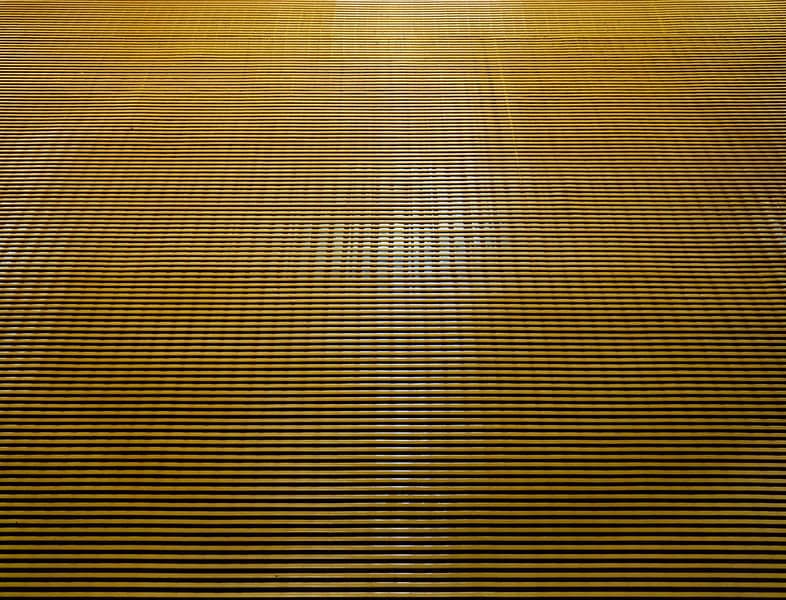
Not all of his pictures have the same humongous format and high point of view, but they are considered as part of his iconic style.
To be honest, at first, I didn’t get much of his work, but I have revisited his work from time to time, and I ended up developing a great fascination for him. I dare to say that when I watch his work. I feel like watching Pollock’s paintings but really understanding them. Maybe some people do understand Pollock, but personally, I don’t have the abstract sensitivity needed to understand it. I really like watching his paintings, but I don’t get them so much. On the other hand, Gursky’s work is something I have managed to understand pretty well.
You can look at his latest work called Amazon here. It is Brilliant.
Andreas Gursky On the Web:
Books by Andreas Gursky:
2. Annie Leibovitz (1949 – )
Annie Leibovitz is an iconic American portrait photographer celebrated for her compelling and intimate photographs of celebrities, politicians, and other public figures. Born on October 2, 1949, in Waterbury, Connecticut, Leibovitz discovered her passion for photography while studying at the San Francisco Art Institute.

Leibovitz began her career at Rolling Stone magazine in 1970, quickly gaining recognition for her bold and original style. She ascended to the position of chief photographer in 1973, a role she maintained for over a decade.
Leibovitz’s work is characterized by its ability to capture the essence of her subjects, often revealing hidden facets of their personalities. Her photographs, known for their emotional depth, frequently feature her subjects in elaborate and imaginative settings. Leibovitz’s work has been described as both intimate and dramatic, and she excels at making her subjects feel comfortable and at ease in front of the camera.
Over her illustrious career, Leibovitz has photographed some of the most influential figures of our time, including John Lennon, Queen Elizabeth II, and Barack Obama. Her work has been featured in prominent publications such as Vanity Fair and Vogue and exhibited in galleries and museums worldwide.
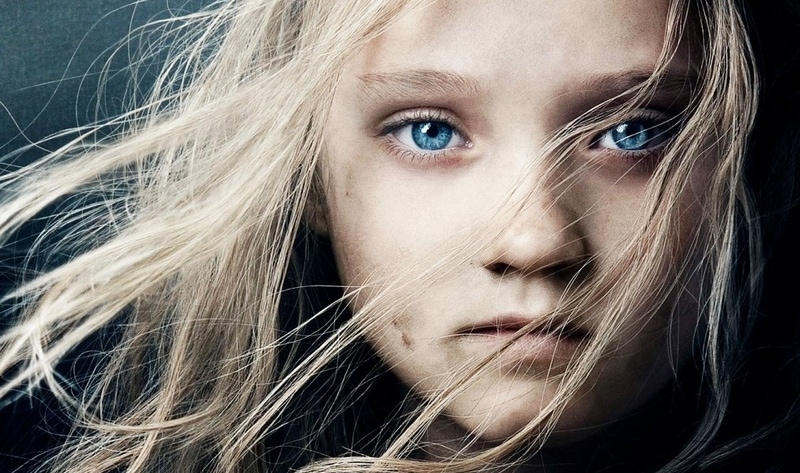
Leibovitz has received numerous awards for her work, including the National Portrait Gallery’s Portrait of the Nation Prize and the International Center of Photography’s Infinity Award for Applied Photography. She continues to work as a photographer and is considered one of her generation’s most significant contemporary photographers.
Leibovitz’s influence on the contemporary photography scene is undeniable. Her portraits have become invaluable assets, enriching the history of photography from commercial work to intimate images. Her tenure at Rolling Stone, which lasted about 13 years, shaped the magazine’s identity. While working there, Leibovitz realized she could contribute to magazines and still pursue personal projects.
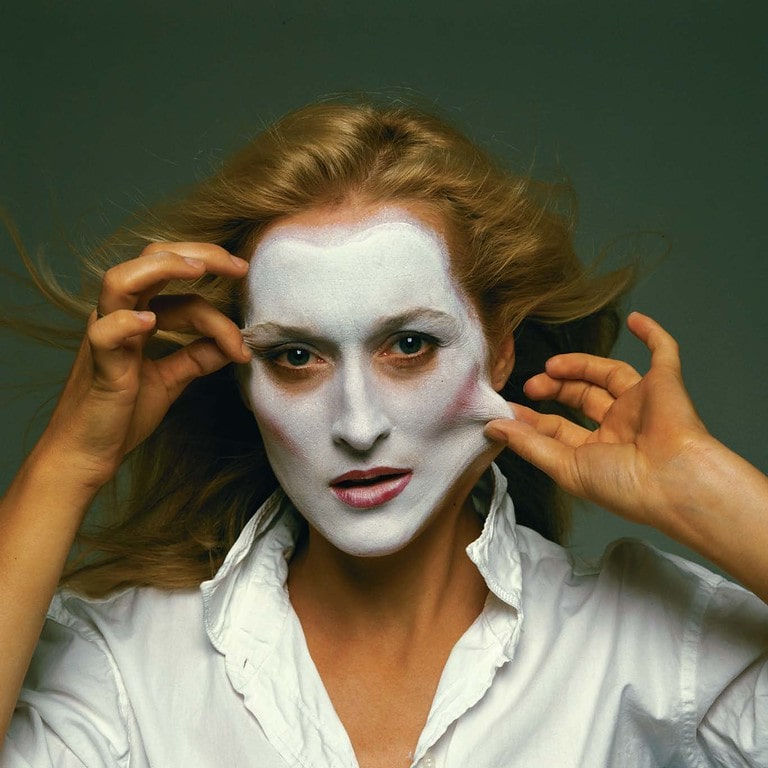
From high-profile commercial assignments for clients like Disney to her deeply personal images, Annie Leibovitz is a beacon of excellence in the field.
Annie Leibovitz On the Web:
Books by Annie Leibovitz:
3. Chris McCaw (1971 – )
Chris McCaw, born in 1971 in Daly City, California, is an innovative contemporary photographer celebrated for his unique technique of solar photography. McCaw’s interest in photography developed at a young age, leading him to study at the Academy of Art University in San Francisco.
His work, known for using the sun as a light source, involves creating direct-positive images on silver gelatin paper, a technique he calls “Sunburns.” This process requires exposing the paper for extended periods, using a large-format camera with a vintage lens. The result is a photograph that captures the sun’s movement across the sky, leaving a burnt trail on the paper.

McCaw’s Sunburns series visually represents time and the natural world, with each photograph capturing a specific moment in the earth’s rotation around the sun. His work seamlessly blends science and art, focusing on the physical properties of light and the passage of time.
Beyond Sunburns, McCaw has explored capturing long exposures of landscapes and skyscapes, using homemade massive large-format cameras for his photographs, with some exposures lasting up to 24 hours. He shoots directly into expired photography paper, which solarizes and eventually catches fire due to the magnifying effect of the optics on sunlight.

McCaw’s work, exhibited in galleries and museums worldwide, is elegant and raw, pushing the limits of analog photography. Each of his images is unique, addressing a common criticism of photography’s acceptance in the Fine Art world and making his work truly distinctive.
McCaw has received several awards for his innovative approach and continues to be considered one of the most exciting contemporary photographers working today.
Chris McCaw On the Web:
Books by Chris McCaw:
4. Cindy Sherman (1954 – )
Cindy Sherman is an acclaimed American photographer and filmmaker, celebrated for her conceptual self-portraits that delve into identity, gender roles, and the portrayal of women in society. Born on January 19, 1954, in Glen Ridge, New Jersey, Sherman grew up in Huntington, Long Island, and studied at the State University College at Buffalo.

Sherman’s work is distinguished by her use of herself as the subject, transforming her appearance through makeup, costumes, and props. Her most iconic series, “Untitled Film Stills,” consists of 69 images in which Sherman poses as various female characters. The series evokes the aesthetics of 1950s and 1960s Hollywood, film noir, and European art cinema, challenging the stereotypical portrayal of women in media and popular culture.
Sherman’s artistic style is versatile, often incorporating elements of performance art with a focus on the construction of identity and the artificiality of representation. Her role as both the viewer and subject in her works is a testament to her conscious postmodern artistic practice. Her ability to embody different subjects from non-existent movies invites viewers to construct the context around the still they are observing.

Sherman’s work has been widely exhibited in museums and galleries globally, including the Museum of Modern Art in New York, the Tate Modern in London, and the Centre Pompidou in Paris. She has received numerous awards, such as a MacArthur Fellowship and the Praemium Imperiale Award for Painting.
TIME Magazine recognized Sherman’s “Untitled Film Still #21” as one of the 100 most influential images of all time. Her stills manipulate viewers by recasting her identity, showing that photography can allow people to be something they’re not, much like the curated selfies found on social media. Sherman’s work is a notable example of pop art and has established her as one of the most significant contemporary artists of her generation.

Books by Cindy Sherman:
5. Didier Massard (1953 – )
Didier Massard, a distinguished French photographer born in Paris in 1953, is celebrated for his meticulous and surreal images. Massard developed an early interest in photography and later pursued studies in visual communication and photography.

Massard’s work is characterized by its imaginative and fantastical nature, often featuring elaborate sets and landscapes that he constructs in his studio. He painstakingly builds these miniature worlds, which are then carefully lit and photographed. The result is a photograph that appears to capture a real, yet dreamlike, scene.
His artistic style is often described as magical realism, with a focus on creating a sense of wonder and mystery in his images. Massard’s work often blurs the lines between reality and fiction, inviting viewers to enter a world of imagination and fantasy.
Massard produces very few images per year due to the intricate optical manipulations he incorporates into them. His work has been likened to “magical realism” painting, thanks to its ethereal lighting and romantic sense of illusion. His meticulous and slow-paced process allows him to create images that are a “completion of an inner imaginary journey.”

Massard’s work has been exhibited in galleries and museums worldwide, including the International Center of Photography in New York, the Victoria and Albert Museum in London, and the Centre Pompidou in Paris. He continues to work as a photographer, creating images that transport viewers to otherworldly realms.
Didier Massard on the Web
Books by Didier Massard:
6. Francesca Woodman (1958 – 1981)
Francesca Woodman, an American photographer born on April 3, 1958, in Denver, Colorado, is renowned for her images that often feature herself as the subject. Woodman discovered her passion for photography at a young age and studied at the Rhode Island School of Design (RISD).

Woodman’s work is characterized by its ethereal and introspective quality. She frequently used slow shutter speeds and movement to create blurred and ghostly images, often exploring themes of identity, femininity, and the body with a focus on self-portraiture.
Her artistic style is often described as surrealist, with a dream-like quality that invites viewers to engage with her work personally and emotionally. Woodman used her body as a medium to express her inner thoughts and emotions, often interacting with her surroundings in a way that emphasized the fragility and transience of life.
From her first self-portrait at the age of 13 to her death at 22, Woodman produced over 800 images that unveiled her identity. Her photographs are recognized for their unique vision and the vast range of innovative techniques. They have also been the subject of extensive critical study by academic entities.
Woodman’s parents, George and Betty Woodman, both artists, now manage her estate. Of her more than 800 images, 120 have been exhibited or published.

Despite her tragically short career, Woodman’s work has been widely celebrated for its innovation and emotional depth. Her work has had a lasting impact on the world of photography and continues to be exhibited in galleries and museums worldwide.
Francesca Woodman on the Web
7. Gregory Crewdson (1962 – )
Gregory Crewdson is a highly-acclaimed American photographer renowned for his elaborate, surreal, and cinematic images. Born in Brooklyn, New York, on September 26, 1962, Crewdson developed a passion for photography at an early age, leading him to study at SUNY Purchase and the Yale University School of Art.

His work is characterized by highly detailed scenes featuring ordinary suburban settings transformed into eerie, otherworldly environments. Crewdson often uses elaborate setups with large crews, detailed lighting, and intricate props, crafting narratives that resemble film productions.
His artistic style blends fine art and Hollywood cinema, focusing on suburban life’s psychological and emotional aspects.
Crewdson’s photographs often evoke feelings of loneliness, isolation, and unease and are marked by dramatic lighting, meticulous composition, and a keen focus on small, ordinary details.
Crewdson’s photographs are reminiscent of scenes from science-fiction films, with subjects that often appear to be pawns in a larger theatrical game. His images are crafted stages with complex dramatic lighting that engages viewers in narratives that, while appearing real, may not exist.
Known for his meticulous planning, Crewdson approaches his photographs as if they were cinematic productions, creating fiction that transcends daily life. In his own words, he strives to “create worlds in stillness and suspension.”
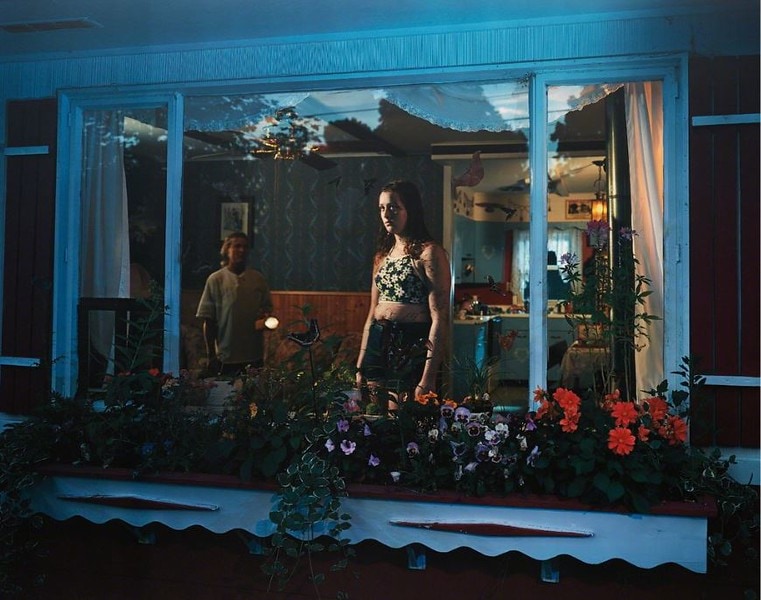
Crewdson’s work has been exhibited in major museums and galleries worldwide, including the Museum of Modern Art in New York, the San Francisco Museum of Modern Art, and the White Cube Gallery in London. He has received numerous awards and honors, including the Skowhegan Medal for Photography and the National Endowment for the Arts Visual Artists Fellowship.
With his innovative approach and unique style, Gregory Crewdson has solidified his position as one of his generation’s most important and influential contemporary photographers.
Gregory Crewdson on the Web
8. Hendrik Kerstens (1956 – )
Hendrik Kerstens, a renowned Dutch photographer, is celebrated for his contemporary portraits that evoke a timeless, classical aesthetic. Born in 1956 in The Hague, Kerstens pursued a business career before discovering his passion for photography in the mid-1990s.

Kerstens’ work is characterized by his unique ability to blend traditional portraiture techniques with modern elements. His most famous series features his daughter, Paula, often styled in historical, Dutch Golden Age-inspired costumes and settings, playfully referencing the work of artists such as Johannes Vermeer and Rembrandt.
His artistic style combines classical composition and lighting with contemporary themes and subjects, creating timeless and relevant images. Kerstens often uses everyday materials, such as plastic bags or bubble wrap, to create headpieces and collars reminiscent of 17th-century fashion, adding a whimsical touch to his work.
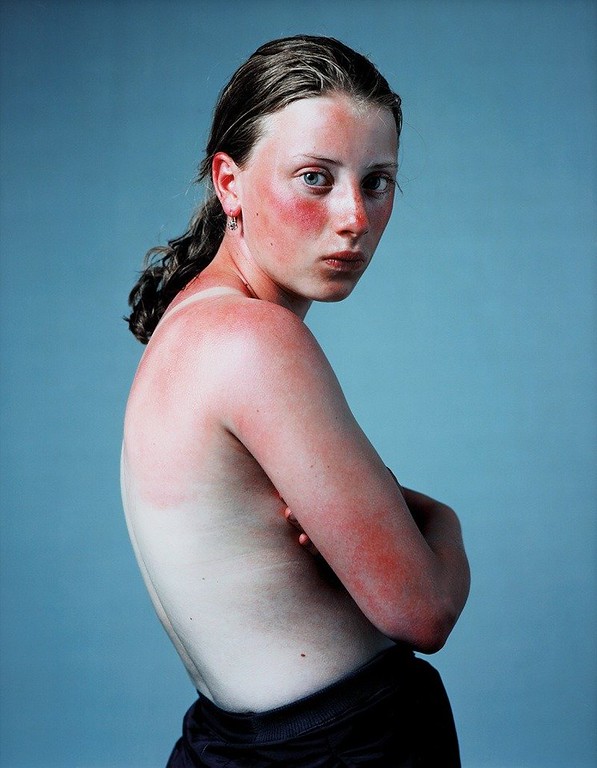
Kerstens’ work has been exhibited in museums and galleries worldwide, including the Museum of Contemporary Art in Sydney, the Norton Museum of Art in Florida, and the Photographic Resource Center in Boston. He has received several awards for his photography, including the Taylor Wessing Photographic Portrait Prize.
One of his standout pieces, titled “Bag,” draws parallels with Vermeer’s “Het meisje met de parel,” but Kerstens adds a contemporary twist with a plastic bag. This unique approach has made Kerstens a prominent figure in modern photography, skillfully blending the old with the new in his captivating portraits.
Hendrik Kerstens on the Web
9. Hiroshi Sugimoto (1948 – )
Hiroshi Sugimoto, a highly acclaimed Japanese photographer and artist, is renowned for his large-scale, black-and-white photographs exploring time, memory, and perception concepts. Born in Tokyo, Japan, in 1948, Sugimoto moved to the United States in the early 1970s to study photography at the Art Center College of Design in Los Angeles.

Sugimoto’s work is characterized by its meditative quality, with images often capturing a single subject, such as a seascape, theater, or architectural structure, over long exposure times. This results in a minimalist and ethereal aesthetic. Sugimoto’s photographs possess a dreamlike and timeless quality that invites viewers to reflect on the nature of reality and the passage of time.
His artistic style is often described as minimalist and conceptual, emphasizing the purity of form and the exploration of the fundamental properties of photography. Sugimoto’s work often blurs the lines between photography, sculpture, and installation art, challenging traditional notions of representation and inviting viewers to engage with his work on a deeper level.

Sugimoto’s work has been exhibited in major museums and galleries worldwide, including the Museum of Modern Art in New York, the Tate Modern in London, and the Centre Pompidou in Paris. He has received numerous awards and honors for his work, including the Hasselblad Foundation International Award in Photography and the Praemium Imperiale Award for Arts.
Sugimoto’s series, such as Dioramas, In Praise of Shadows, and Portraits, Conceptual Forms, and Mathematical Models, are marked by a disciplined approach and a focus on the transience of life and common art themes, such as the conflicts around life and death. In particular, his Theatres and Seascapes series encapsulate the expression of time. For Theatres, Sugimoto shoots an exposure that lasts the entire film, resulting in an empty white luminous screen standing in the middle of spaces designed for entertainment, from architecturally significant to humble drive-in theaters.
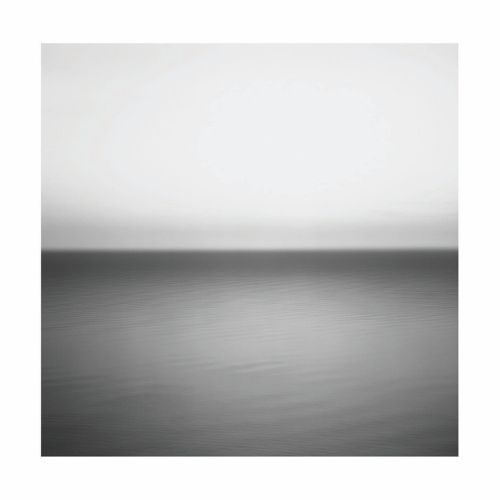
With his innovative approach and distinctive style, Hiroshi Sugimoto has established himself as one of his generation’s most important and influential contemporary photographers, captivating audiences with his meditative and thought-provoking images.
Hiroshi Sugimoto on the Web
10. Jeff Wall (1946 – )
Jeff Wall is a highly regarded Canadian photographer known for his large-scale, backlit photographs that resemble cinematic scenes. Born on September 29, 1946, in Vancouver, British Columbia, Wall developed an interest in art and photography at a young age. He studied art history at the University of British Columbia and later pursued a Master of Arts in art history from the Courtauld Institute of Art in London.
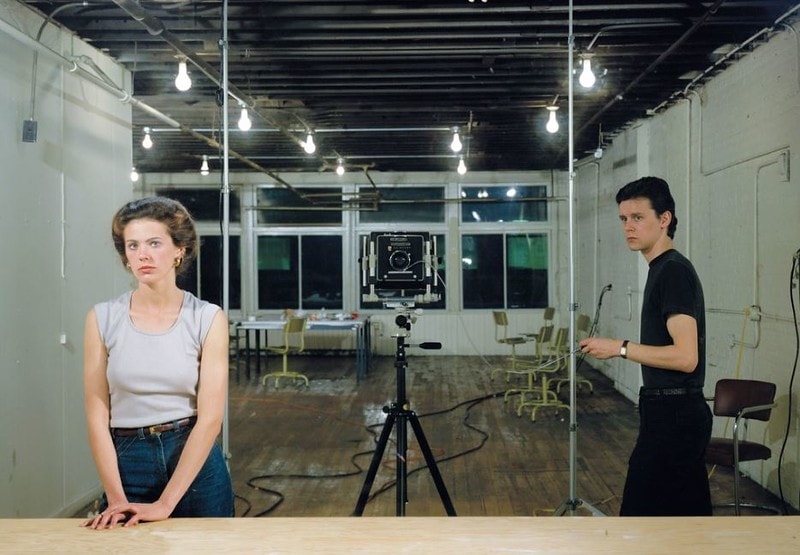
Wall’s work is characterized by its carefully staged narrative compositions. His images are meticulously constructed, often involving elaborate sets, props, and actors to create scenes resembling everyday life snapshots. Wall’s photographs are typically presented as transparencies mounted in lightboxes, giving them a luminous, almost cinematic quality. This is one great example of this.
His artistic style is often described as conceptual and theatrical, focusing on the relationship between reality and representation. Wall’s work explores themes of social interaction, the urban environment, and the complexities of contemporary life. He often draws inspiration from art history, literature, and film, incorporating references to various art forms in his images.
Wall’s work has been exhibited in major museums and galleries worldwide, including the Museum of Modern Art in New York, the Tate Modern in London, and the Centre Pompidou in Paris. He has received numerous awards and honors for his work, including the Hasselblad Foundation International Award in Photography and the Roswitha Haftmann Prize.

With his innovative approach and distinctive style, Jeff Wall has established himself as one of his generation’s most important and influential contemporary photographers, captivating audiences with his thought-provoking and meticulously crafted images.
There is another side of Jeff Wall, and the work that gladdens from digital manipulation, like A Sudden Gust of Wind, reminds of the famous painting from Hokusai.
Jeff Wall on the Web
11. Michael Wolf (1954 – )
Michael Wolf was a celebrated German photographer recognized for his powerful and evocative images of urban environments. Born on July 30, 1954, in Munich, Germany, Wolf grew up in the United States and Canada. He studied photography at the University of California, Berkeley, and later at the Folkwang School in Essen, Germany.

Wolf began his career in 1994 as a photojournalist, spending eight years working for the German magazine Stern in Hong Kong. His work, characterized by a focus on architectural structures and dense urban landscapes, particularly in Asia, captures the repetitiveness and anonymity of high-rise buildings, offering a commentary on the nature of contemporary urban life. His series “Architecture of Density,” featuring images of Hong Kong’s densely packed residential buildings, is perhaps his most well-known work. These images often showcase a symmetric looks of large buildings with repetitive structures, emphasizing the visual impact of the urban environment.
His artistic style is often described as documentary and observational, emphasizing the visual impact of the urban environment. Wolf’s work explores themes of space, alienation, and the human experience within the context of modern cities. He often used telephoto lenses to compress his images’ perspective, emphasizing the urban landscape’s scale and complexity.
A personal favorite of his series is “Tokyo Compression,” which portrays people tightly packed in the crowded subway systems of Tokyo, highlighting the social dynamics of city life.

Wolf’s work has been exhibited in galleries and museums worldwide, and he has received numerous awards for his photography, including the World Press Photo Award and the International Photography Award. He continued to work as a photographer until his untimely death in April 2019.
The work of Michael Wolf is deeply important because of his realistic approach to society. Get yourself a complete day to browse inside his website for great images to think about.
Michael Wolf on the Web
12. Nan Goldin (1953 – )
Born in Washington, D.C., in 1953, Nan Goldin is a distinguished American photographer celebrated for her deeply personal and intimate approach to documentary photography. Raised in a middle-class Jewish family in Boston, Goldin began taking photographs at the age of 15 and later honed her skills at the School of the Museum of Fine Arts in Boston.
Her work, characterized by candid and raw, unflinching honesty, explores themes such as love, sexuality, gender, addiction, and domestic violence. Her most famous series, “The Ballad of Sexual Dependency,” is a visual diary of her life and the lives of her friends in New York City during the 1980s. The series stands out for its candid, low-light shots that give the images a gritty and grainy quality.

A member of the so-called School of Boston, Goldin has been credited with revitalizing documentary photography through her visual narratives of the New York countercultural scene of the 70s and 80s. She engages with specific social circles, photographing them uniquely and intimately. Her work often features LGBT-related themes and public figures, serving as a visual autobiography of herself and her relationships with those who have trusted her.
Goldin’s self-portrait “Nan One Month After Being Battered” underscores the importance of photography as a tool for denouncing violence.
Goldin’s photography has been widely exhibited in museums and galleries globally, earning her numerous awards. She continues to work as a photographer, advocating for LGBTQ rights and HIV/AIDS awareness.

Influenced by the fashion photography of Helmut Newton and Guy Bourdin, Goldin from photography magazines was introduced to the work of art photographers such as Diane Arbus, Larry Clark, and August Sander.
She resides and works between New York, Paris, and London.
Nan Goldin on the Web
13. Philip-Lorca diCorcia (1951 – )
Philip-Lorca diCorcia is an acclaimed American photographer whose work combines documentary and staged photography elements. Born in 1951 in Hartford, Connecticut, diCorcia attended the School of the Museum of Fine Arts in Boston and later earned an MFA in Photography from Yale University.

DiCorcia’s work is characterized by its careful orchestration and ambiguous narratives. He often stages scenes with real people and real locations but does not adhere to a strict sense of realism. Instead, he constructs theatrical and enigmatic tableaus, with subjects caught in moments of introspection or inaction. This balance between reality and fiction makes his work cinematic, suggesting broader stories and contexts beyond the frame.
According to MoMA, former director of MoMA’s Department of Photography, John Szarkowski, described diCorcia’s work as follows: “Philip-Lorca diCorcia involves us in the issues of story and plot by constructing tableaus that withhold information that we expect to be given.” He went on to say, “DiCorcia’s photographs succeed because of his will to show more and tell less.”

His images are meticulously composed, often featuring dramatic lighting and a sense of foreboding or mystery. DiCorcia’s series, such as “Hustlers” and “Streetwork,” showcases his ability to blend the candid with the contrived, creating images that are at once believable and surreal.
DiCorcia’s work has been widely exhibited in museums and galleries worldwide, and he has received numerous awards and accolades for his contributions to the field of photography. He has taught at Yale University in New Haven, Connecticut, and continues to be an influential figure in contemporary photography.
You can watch some of the great pieces of Philip-Lorca diCorcia here.
Philip-Lorca diCorcia on the Web
14. Ryan McGinley (1977 – )
Ryan McGinley is a celebrated contemporary American photographer known for his dynamic and emotive images of youth culture. Born on October 17, 1977, in Ramsey, New Jersey, McGinley discovered his love for photography during his graphic design studies at Parsons School of Design in New York City.

McGinley initially gained recognition for his intimate and spontaneous documentation of his close friends’ real-life experiences. His early work is characterized by a raw and candid approach, focusing on personal moments that deeply resonate with viewers.
Over time, McGinley’s style has evolved. He now constructs envisioned situations, casting subjects at rock ‘n’ roll festivals, art schools, and street castings in cities. These images maintain the natural essence of his earlier work, yet present a more deliberate and composed narrative.
His work is characterized by vibrant, dynamic compositions, and an intimate portrayal of young people in moments of freedom and exuberance. McGinley often captures his subjects in natural settings, frequently nude, engaged in activities such as running, jumping, or swimming. The images exude spontaneity and playfulness, reflecting his fascination with the energy and spirit of youth.

McGinley’s artistic style is a blend of documentary and staged photography, focusing on capturing the authentic emotions and experiences of his subjects. His work is also noted for its use of color and light, creating visually striking and emotionally resonant images.
Known for being the youngest artist to have a solo show at the Whitney Museum of American Art, McGinley has earned the title of “the most important photographer in America.” His work has been widely exhibited in museums and galleries around the world, and he has received several awards, including the ICP Infinity Award for Young Photographer.
Related: Do you know the most expensive photograph in history?
My personal favorite, and has also been used as the cover for a book titled Photography After Frank is this one. Magnificent indeed. The image depicts a young girl in a gesture that makes me think immediately about Kerouac and all the beatniks of the time.
Ryan McGinley on the Web
15. Shirin Neshat (1957 – )
Shirin Neshat is a prominent contemporary Iranian artist and filmmaker known for her work exploring issues of gender, identity, and politics, particularly in Muslim-ruled countries. Living in exile from her homeland, Neshat’s art is deeply intertwined with her personal experiences and her relationship between her own life and political issues.

Neshat’s artistic style is characterized by its powerful and evocative imagery. Her work often features black-and-white photographs of Muslim women, overlaid with Persian calligraphy. The images are striking and emotive, capturing the complexities and nuances of the female experience in Islamic cultures.
As a filmmaker, Neshat’s work continues to explore these themes. Her movie “Women without Men,” for instance, is a critically acclaimed piece that delves into the lives of four Iranian women during the politically tumultuous period of the 1953 Iranian coup d’état.

Neshat’s work is represented by the Gladstone Gallery, where you can view some of her pieces. Hearing the artist’s own statements is essential for understanding the purpose behind her photographs. Through her art, Neshat explores the paradox of being an artist in exile, navigating the challenges and complexities of expressing her identity and experiences through her work.
Books by Shirin Neshat:
Famous Contemporary Photographers | Final Thoughts
All the work created since 1970 fits into the historical characterization of Contemporary, but of course, not all are considered relevant or meaningful in the art world. If you are pursuing Artistic Expressionism through photography, don’t forget about the meaning and the concept your work will have.
Writing an Artist Statement is a great action to justify your work. And here you have some great examples; just click on the names and then go to Statement.
The following list of famous contemporary photographers gives you some examples that are considered important in the History of Photography.








